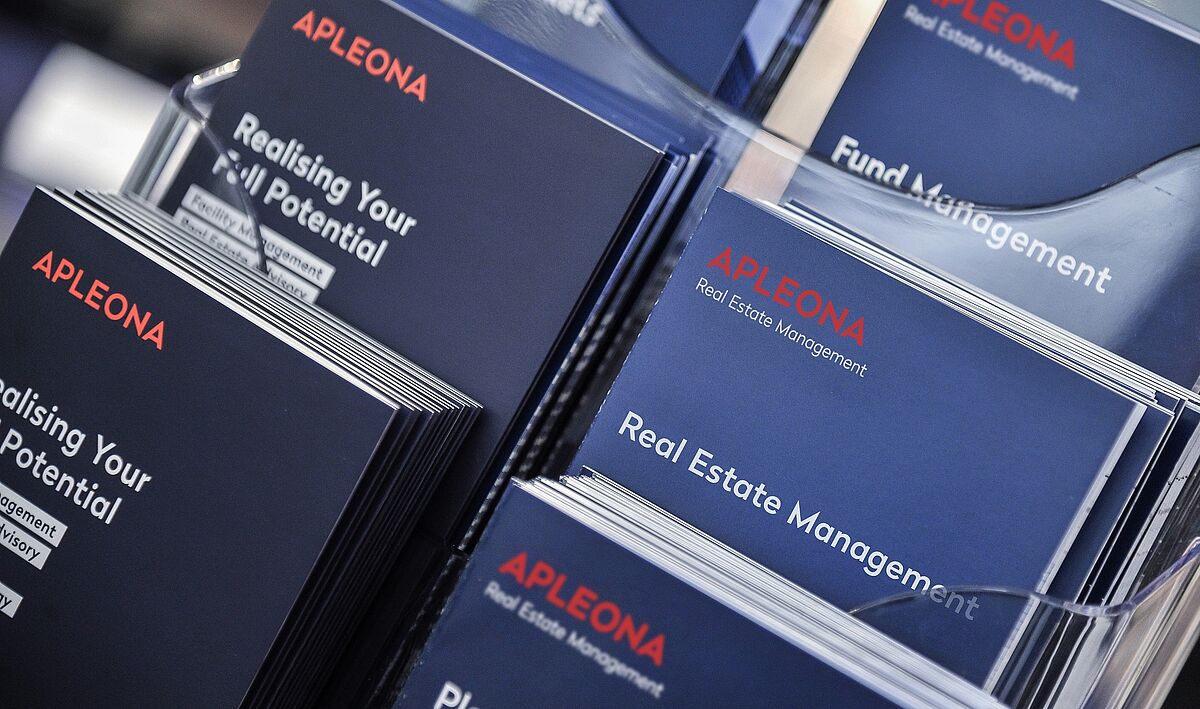The interview was conducted by Roswitha Loibl from immobilienmanger Verlag.
In order to reduce the risk of infection with the corona virus in the workplace, the real-estate services provider Apleona has developed a warning system for the smartphone. We spoke with CEO Dr. Jochen Keysberg about this.
In the coming days, Federal Health Minister Jens Spahn will present the Corona warning app to the German government. Apleona's warning system for the office is already in use. CEO Dr. Jochen Keysberg explains what this system can do in an interview with immobilienmanager.
Apleona has developed a tracing system to help avoid infection with Covid-19 in the office. What guided you in doing so?
First, let me clarify that we are not trying to provide a replacement for the federal government’s tracing app. However, this app only tracks contacts that were at a distance of less than 1.5 meters. But when it comes to infection through aerosols in particular, it is also relevant to ask how many people have been in a room for how long, including at a distance of more than 1.5 meters. Our system records this.
Why did you use QR codes that are scanned in using cellphones instead of developing an app?
We already have experience with workplace apps. Here, we found that companies’ IT security requirements can significantly delay the launch. At many corporations, only apps from the company’s own app store can be downloaded onto company cellphones. It can take more than a year until an app is available there. But we want to provide a quick solution that can also be used by visitors.
How is it possible to identify employees – and thus warn them – if the system works anonymously and no app is required? Data have to be stored somewhere, don’t they?
Each room has its own QR code, a printout of which can be hung up on a wall or stuck to the tables. When an employee enters a room, he or she must scan in this QR code. The first time a code is scanned in, a user ID is created for this employee and a cookie is set up on his or her cellphone. This ID is thus permanently stored on the device. Information as to which rooms the person has been in is deleted after three weeks.
If a colleague has fallen sick with Covid-19, how can other employees find out whether they have been in the same room as this person?
The responsible department, for example the HR department, can call up the contact chain of the person who is sick. When colleagues then sign in to their office using the QR code, they receive an alarm notification if they have been in a room at the same time as the sick person in the previous days. Our system also offers the option to save the user’s e-mail address. Then the information chain works even faster, because each contact person can be notified personally – albeit not anonymously in this case.
In smart offices, the use of rooms also can be recorded using a sensor system that is already installed. So why is another system needed?
The sensor system only identifies how many people are in a room. It doesn’t record whether it was the same person five times or five different people. But this is very relevant when it comes to cleaning a room to prevent infection. Our system can also provide information on when a room was last cleaned. This helps with deciding whether to use a room or look for somewhere else instead. Another thing that a sensor system can’t do is to send an alarm quickly.
You have tested your system at Apleona. How many employees participated?
We have been running the test for over three weeks. More than 300 employees are taking part.
Generally speaking, how willing do you think people will be to take part?
I think in the office there will be relatively high willingness, unlike in people’s private environment, where they don’t want to be tracked.
What do you think of the nationwide coronavirus tracing app?
I don’t want to judge it, but I can assure you that as soon as it is available I will have it on my cellphone.


